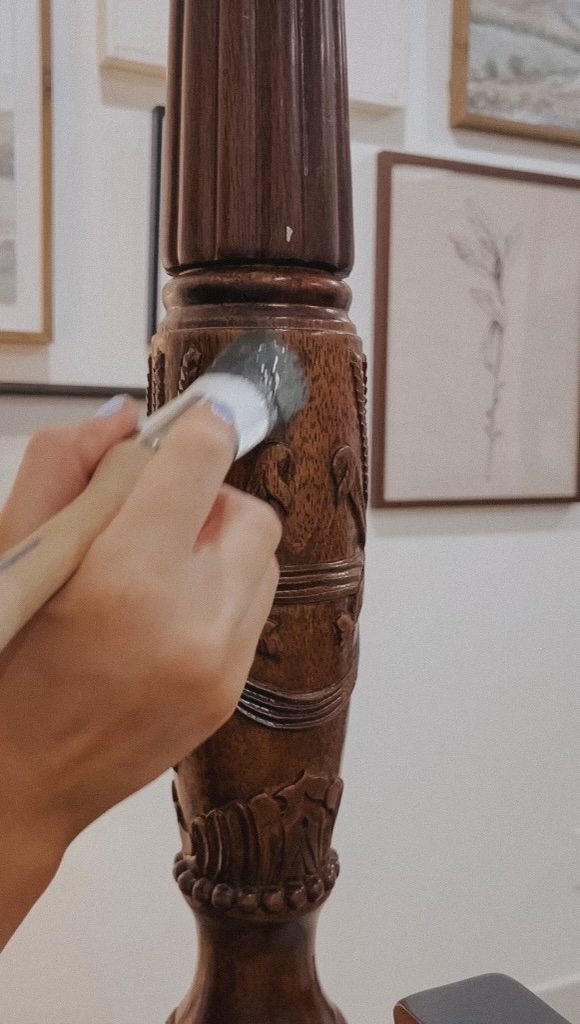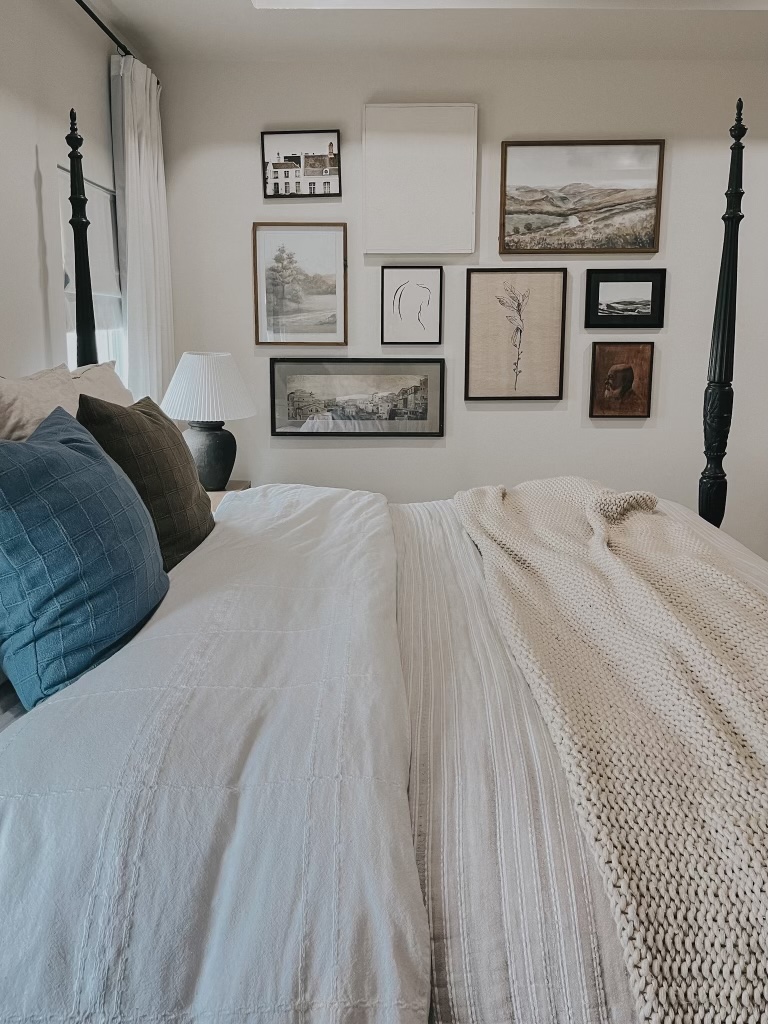Let me start by saying I am not a professional; this is based on my research and projects. Although I am not a professional, I have refinished furniture pieces for over 10 years. I have done it the right and wrong way, learned from my mistakes, and figured out what options work best for which pieces. You never want your paint to start peeling or flaking off. My number one goal is to make sure it passes the scratch test when you are done. There are a lot of different opinions on whether you should sand first or not, and I truly think it comes down to the type of paint you are using.
This post contains affiliate and e-links; if you purchase through my links, I will make a small commission to help maintain this blog and fund Instagram projects. If you choose to shop these links, thank you for helping to support my business.
My latest project

Recently, I painted a bed and did the bare minimum prep work. I cleaned it with Krud Kutter, a powerful cleaner that removes dirt, grease, and grime without the need for extensive sanding. Then, I lightly sanded with 220-grit sandpaper to promote better adhesion then wiped clean using a tack cloth to ensure all the dust was clear. For paint, I opted for Sherwin Williams Emerald, and it has held up very well, even passing the scratch test with flying colors. Prep work is undoubtedly essential, and a good paint job using the best paint will always speak for itself.

The Debate
Now, let’s dive into the heart of the matter: should you sand before painting furniture or not? Personally, I believe the answer lies in understanding the intricacies of different types of paint and the condition of your furniture piece.
It Depends
Whether you should sand before painting furniture depends on what type of paint you are using and the condition of the pieces you are painting. You always want to decide how you are painting. Are you using spray paint, paint sprayer etc. Here’s why sanding might be a good idea:
Here Are Three Good Reasons to Sand
- Smooth Surface: Sanding with a medium-grit or finer grits of sandpaper or using an orbital sander helps achieve a smooth finish, ensuring that the paint goes on evenly.
- Improved Adhesion: Sanding roughens the surface, providing a better grip for the paint to adhere to, especially on bare wood or surfaces with existing paint.
- Stain Blocking: Sanding can help block stains, especially on old furniture, wood furniture, by removing surface contaminants and allowing for better penetration of primer and paint.
5 Best Ways to Paint Without Sanding
However, sanding is not always necessary, especially if you’re using certain types of paint or if the furniture piece is in relatively good condition. Here are some alternative options:
- Chalk Paint: Chalk-type paints are known for their excellent adhesion to various surfaces, including wood furniture, without the need for extensive sanding.
- Milk Paint: Milk paint is another option that adheres well to bare wood and existing paint layers, making it ideal for furniture makeovers with minimal prep work.
- Latex Paint: Latex paint is versatile and can be used on wooden furniture with minimal surface preparation, especially if it has a built-in primer.
- Spray Paint: Spray paint can provide a quick and easy solution for painting furniture without sanding, especially for small projects or hard-to-reach areas.
- Bonding Primer: Using a bonding primer, such as Kilz, can promote adhesion and block stains, allowing you to paint over surfaces without extensive sanding.
- Liquid sandpaper: Liquid sandpaper promotes better adhesion for primers and paints and removes gloss, dirt, grease, and other contaminants.
In My Experience
Although cleaning, light sanding, and using Sherwin Williams Emerald paint is my favorite option, sometimes you can’t avoid the hard work. Things to consider include how old your piece is, is it good quality or bad? Are there chips in the paint, how many coats of paint, any stains or imperfections that need to be repaired, etc.
Conclusion
In conclusion, whether you should sand before painting furniture ultimately depends on various factors, including the type of paint you’re using, the condition of the furniture piece, and your desired outcome. While sanding can undoubtedly give you professional-looking results, it’s not always the only option. With proper cleaning and preparation, along with the right type of paint, you can achieve stunning results with minimal sanding or even without sanding at all.
Follow me on Instagram for more budget-friendly DIY and home tutorials. Here, you will find me in stories sharing live step-by-step tutorials, and you are the first to know what’s new and coming to the blog! Hope to see you there.
This post contains affiliate and e-links; if you purchase through my links, I will make a small commission to help maintain this blog and fund Instagram projects. If you choose to shop these links, thank you for helping to support my business.



Comments will load here